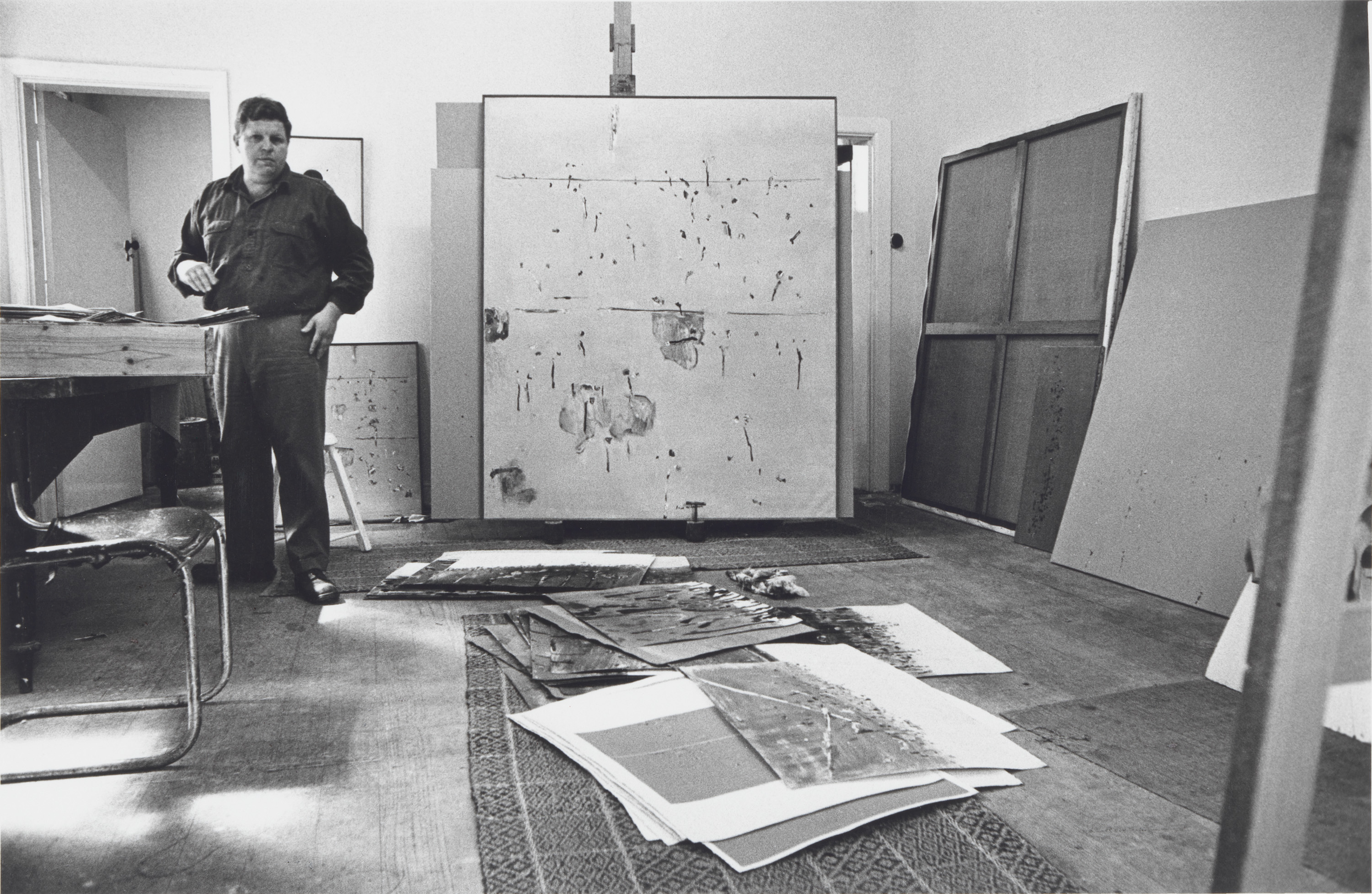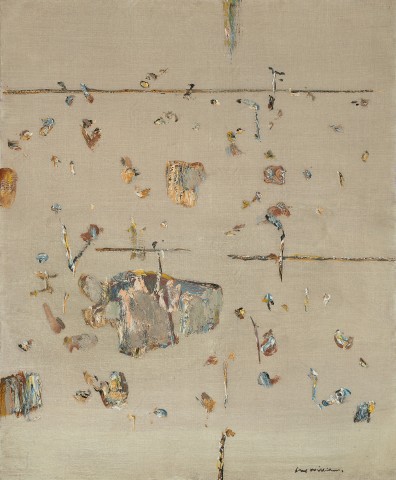PONDS, LYSTERFIELD, 1966
FRED WILLIAMS
oil on canvas
86.0 x 71.0 cm
signed lower right: Fred Williams.
Leonard French, Victoria, acquired directly from the artist
Private collection, Melbourne
Deutscher and Hackett, Melbourne, 30 November 2011, lot 9
Private collection, Sydney
Deutscher and Hackett, Melbourne, 13 June 2018, lot 5
Private collection, Jakarta
Ponds, Lysterfield, 1965 – 66, etching and aquatint, in Mollison, J., Fred Williams: Etchings, Rudy Komon Gallery, Sydney, 1968, cat. 225, p. 129 (illus. Fig. 252)
We are grateful to Lyn Williams for her assistance with this catalogue entry.
We are grateful to Brenda Martin Thomas, wife of the late David Thomas AM, for kindly allowing us to reproduce David’s research and writing in this catalogue entry.
180595 HIGH RES_cmyk.jpg

Fred Williams is rightfully acclaimed as one of Australia’s finest artists of the twentieth century. As a landscape painter he has no equal – as attested by Ponds, Lysterfield, 1966, which raises invention and subtlety of vision to a level of singularity that led us to see the Australian landscape with different eyes. As James Gleeson wrote of Williams’ sell-out exhibition of 1966 at Rudy Komon’s Gallery in Sydney – ‘It has been clear for some time that Williams was a landscapist of rare distinction, but this exhibition places him in that thinly populated category of painters who have helped to shape the vision a country has of itself.’1 Part of the miracle of Williams’ art is its transformation of the subject, especially its scrubbiness and monotony, into paintings elegant, rich in colour, textural variation and imagination.
A highlight of the 1966 exhibition, Lysterfield Landscape I, 1965 – 66 entered the collection of Rupert Murdoch. The following year Murdoch would acquire another Lysterfield painting from Williams’ sell-out solo exhibition at Georges Gallery, Melbourne (Hillside Landscape Lysterfield, 1966 – 67) while Lysterfield Landscape II, 1967 entered the collection of mining legend Sir Roderick and Lady Carnegie. Williams frequently visited the Lysterfield region from the winter of 1965 onwards. It was not very far from his then home at Upwey and he would continue to paint there over a number of years into the 1970s, capturing the changing light and colours of the seasons. ‘At Lysterfield’ as his close friend James Mollison points out, ’he often had to paint from the edge of the road, and tall foreground grasses are the key to many of his Lysterfield paintings.’2 Significantly, the area would inspire Williams to such heights as the magnificent Triptych Landscape, 1967 – 68 in the collection of the National Gallery of Australia, Canberra and Yellow Landscape, 1968 – 69 in the collection of the Geelong Art Gallery – the latter of which has been described by McCaughey as ‘the crowning glory of the whole Lysterfield group...’3
With its predominance of cool tones, Ponds, Lysterfield evokes winter. The scrubby but empty countryside is created by a few impasto strokes of the brush across a smooth field of velvety greys. These expressionist textures also contrast against the balance achieved through the accent on verticals and horizontals, and the classical association they give to the composition. A masterpiece of minimalism, the absence of a horizon line achieves greater harmony, earth and sky are one, supported by the multi-viewpoint and its combination of motifs seen from above and in profile. His art is ‘both intimate and remote’ wrote Elwyn Lynn in The Bulletin of Williams’ 1966 exhibition’.4 Williams’ remote intimacy is almost Chinese in its mixture of immediate gesture, of spontaneous notation, with contemplation and serenity’, he continued. In Ponds, Lysterfield the landscape provided Williams with the inspiration for a singular, lyrical essay on the Australian scene in all its casual formality. It is a painting of ineffable beauty.
1. Gleeson, J., ‘Williams is at His Best’, Sun, Sydney, 12 October 1966
2. Mollison, J., A Singular Vision: The Art of Fred Williams, Australian National Gallery, Canberra, 1989, p. 100
3. McCaughey, P., Fred Williams, Bay Books, Sydney, 1980, pp. 190-91
4. Lynn, E., ’Poetic Bushland’, Bulletin, Sydney, 22 October 1966, p. 54
DAVID THOMAS
